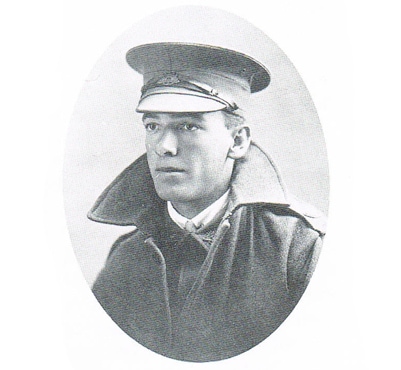This story was originally published on 22 April 2015
THEY dug trenches, jumped in, and spent month upon month surviving the pelt of German gun fire.
It's the story of thousands of Australian men who volunteered for the nation's first war after Britain declared war on Germany in 1914.
Many men from Port Adelaide would raise their hands and volunteer to serve in the Great War - conscription wasn't active for the Australian Imperial Force, if you went, you wanted to go.
Nearly 50 Portonians involved in the war either played, or would play, for Port Adelaide's senior team.
Tom McDonald was one of them.
As a young shop assistant and talented runner from Port Wakefield, McDonald was granted consent from his father, John, to enlist and signed his papers in Adelaide in October 1916.
At just 20 years of age, McDonald found himself as one of many making the long trip to England, from where he would be moved to French soil, and the unimaginable life of trench warfare.
Leaving behind Port Adelaide at the start of 1917, he arrived in Devonport, Plymouth after two months’ journey by sea.
He was immediately marched into training at Rollestone in Wiltshire, where he would be drilled for four months before proceeding to France – the front – in July that year.
Constant rotations in the trenches, living on rations, enduring winter, Christmas away from home, and surviving the howls of gun and shellfire around him, the young McDonald would rise through the ranks to be appointed Lance Corporal after a year fighting, and then Sergeant by the end of the northern autumn of 1918.
His ability as a runner probably saved his life.
When a message to headquarters had to be run through the trenches, the volunteer given the task would have to risk his head from scoped-fire from German snipers across no man's land.
Two volunteers had already been picked off when McDonald put his hand up to try.
His grandson, Craig McDonald, recalls stories of a mad dash that only reaped him a promotion.
"You can read up about his story, he's seen two mates shot and then volunteered to do it himself," McDonald told portadelaidefc.com.au.
"He's run through the trenches to get the message back to base while being shot at... he was always a good runner, I remember he once won a prize in a foot race in town before going over."
As good as he may have been as a runner, McDonald would suffer a gunshot wound in 1918. It would effectively end his hopes of being that swift runner upon his return to Australia.
“I remember granddad telling me that gunshot wound cost him a lot of money,” remembers McDonald.
Like many children, and grandchildren of former soldiers, the McDonalds never knew of their grandfather's time on the Western Front.
It wasn't until Tom was on his deathbed that he retold the stories of his war service to Craig, including the time he won a Distinguished Conduct Medal.
“If you read what he was awarded the medal for, he’s gone and captured a gun near the end of the war and been awarded the D.C.M.” McDonald said.
Tom McDonald led a party of troops near the end of the war as part of the "Big Push" of the Australian Imperial Forces under Sir John Monash that broke the supremely fortified German trench system - the Hindenburg Line.
Under his leadership - and in broad daylight - McDonald's party captured fourteen enemy soldiers and two machine guns.
As such, he was awarded a high honour - the Distinguished Conduct Medal.
Such gallantry would define 'distinguished conduct' in anyone’s book today, however the London Gazette citation conferring the King’s award on McDonald was more eloquent.
“…for conspicuous gallantry and devotion to duty, this N.C.O. [non-commissioned officer] led a fighting patrol under heavy fire and captured a hostile gun against heavy odds. The enemy then attempted to surround his party, but taking the attack in flank, he captured fourteen prisoners and two machine guns."
“His determination led to this success.”
Such determination was undoubtedly excessive for the somewhat more sedate battlefields of Adelaide's league football grounds when McDonald returned to Australia.
Nevertheless, he would trade military dress for the iconic black-and-white ‘wharf pylon’ jumper of his hometown upon his return from the war.
Playing forty games over three seasons between 1923 and 1925, McDonald would prove a handy defender and proud Port man – eventually selected to represent South Australia in his final year.
“He was always a Port man, the whole family is, and he was proud of the club even after he finished playing,” says Craig McDonald.
Craig remembers a man who was tough as nails, and like many soldiers of the Great War, humble and discreet when it came to talk of the conflict.
“I remember he only told me about the war on his deathbed,” McDonald says.
“Which came as a shock because we never knew.
“He was tough, real tough, and when he was going [health deteriorating] he just kept saying ‘I want to get out of here... I hate being here.’
“That’s just the sort of guy he was – tough and honest.”
Like many stories that will be remembered this year, few could argue the men like McDonald were anything but tough.
Tom McDonald is the latest former players to be unearthed by Port Adelaide as a merit recipient during wartime, his merits uncovered just days after ANZAC Day 2014.
He joins former captain Bob Quinn (World War II) and Roy Drummond (World War I) who are both recipients of the Military Medal.


